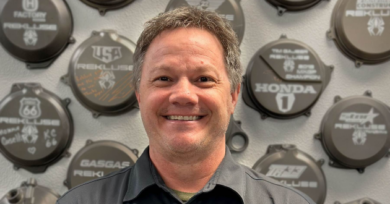Legislation shapes off-road recreation
It’s riding season, and lawmakers across the country are finalizing, or tabling, issues affecting OHV enthusiasts.
West Virginia finally has an all-terrain vehicle safety law on the books after seven years of legislative debate, regulating vehicle use in a number of ways and requiring safety training for riders under the age of 18.
Gov. Bob Wise signed the measure March 10. Wise called the legislation an important first step to protecting West Virginia’s youth. He says it puts safety regulations on the books and leaves room for future governors and legislators to build on its foundation.
The measure requires riders under 18 to take safety courses and wear helmets on both public and private land, while barring those without driver’s licenses from carrying passengers. The law restricts ATV use on some state roads while allowing them on mostly backcountry roads that lack a painted center line.
Manufacturers say these provisions are worth enacting despite grave concerns that the measure would authorize ATV drivers to carry passengers and operate on paved roads, which they consider unsafe.
In Ft. Pierce, Fla., more than a dozen OHV enthusiasts recently met to start making their case for St. Lucie County to build an off-road park at the airport.
Members of the group say the county, state and water management districts own millions of acres that OHV enthusiasts and other members of the public can’t use, and no county park property is available, leaving St. Lucie County International Airport as the only county-owned land large enough for such a facility.
In Maine, lawmakers have been struggling with an ATV bill that is the result of a task force appointed by Gov. John Baldacci.
The bill, as written, would require ATV riders to get written permission from landowners to use their land. It also would require the Legislature to permit its Inland Fisheries and Wildlife Committee to carry forward and submit any of 28 other recommendations for legislation next session; call for mandatory ATV safety training for those 18 and under; install ATV education and trail programs that would be funded with revenue from new ATV fines; and implement a season closing date during mud season.
While that all may seem plausible, no one can figure out where the funding could come from.
In Minnesota, the House of Representatives is also debating OHV access. The home state of Polaris and Arctic Cat, Minnesota’s state forests offer more than 1,000 miles of ATV trails.
In the 2002 session, the Legislature banned cross-country riding, protected peat bogs and most wetlands, and reversed what was called an “open-unless-posted-closed” policy.
A current bill would reopen all trails not posted as closed for the four months of big-game hunting seasons — and during the rest of the year for riders who buy a minnow-trapping license. It would permit riding in public wetlands and bogs when the surfaces are frozen, while private wetlands and bogs would be open at all times.
North of the border, in Nova Scotia, the government commissioned a task force which is, among other things, recommending no child under the age of 14 be allowed to operate an OHV – motorcycles, ATVs and snowmobiles.
“If adopted, these regulations mean that everyone riding 50’s, 60 and almost all the 80cc riders will not be allowed to race,” said Robert Ramsay, president of the Canadian All Terrain Vehicle Distributors Council. Ramsay says there are over 100,000 people in the province riding OHVs, and he says his non-profit organization is attempting to inform them of the legislation.
In fact, both the Canadian All Terrain Vehicle Distributors Council (CATV) and the Canadian Motorcycle and Moped Industry Council (MMIC) have signaled their support to Nova Scotia riders in the debate over controversial proposed OHV regulations.
In California, legislators appropriated $1 million for Imperial Sand Dunes Rec. Area (ISDRA) but Roy Denner, president and CEO of the Off-Road Business Association (ORBA), says he is upset that nearly $1 million of fees collected from campers by the Bureau of Land Management (BLM) at the ISDRA has been diverted from park improvements to conduct a four-month monitoring program to evaluate the status of the Peirson’s milk-vetch plant and other noteworthy species.
Denner said the ISDRA had been receiving approximately $1 million annually from California’s off-highway motor vehicle recreation fund for the operation and maintenance of the facility, supplementing the $200,000 it has been receiving from the federal government.
“Speaking for thousands of off-road enthusiasts who recreate at the Imperial Sand Dunes, we are outraged that the bureau would take our camping fee dollars and use the money for projects that should be funded by the federal government,” Denner said.
“To make things worse, the BLM is funding this multi-million-dollar monitoring program without input from the OHV community and without a vote from their own Technical Review Team,” he said. “This team has been appointed to advise the Bureau on the use of fees that are collected, but none of the members has been asked for their opinion.”
Things look different in Pennsylvania, where five grants totaling $2.2 million were awarded March 26 to develop and improve riding opportunities for that state’s registered OHV enthusiasts.
Grants are made possible from changes to the Snowmobile/ATV law passed by the state’s General Assembly in 2001. Using funds from the Snowmobile/ATV fund, the Pennsylvania Department of Conservation and Natural Resources (DCNR) can award grants each year to municipalities and profit and nonprofit organizations for trail development on county, municipal, non-profit and private lands. Previously, the law restricted the funds to be used solely on state-controlled lands.
In Wisconsin, a new law awaiting Gov. Jim Doyle’s signature would increase ATV registration fees to $30 for two years, up from $12.
At end of 2003, there were about 192,000 registered ATVs and approximately 1,700 miles of trails in Wisconsin. The registration fee has not been increased since it first was introduced by the DNR in 1986.
Registration fees and a share of the state’s gas tax revenues go into a separate ATV fund that the DNR uses to maintain and develop state-certified ATV trails and to provide safety education and law enforcement protection for ATV riders. The total fund last year was a reported $2.3 million.
The new law also will establish a maximum decibel level for ATVs used on certified trails, and make safety education mandatory for ATV riders born after Jan. 1, 1988. Four hundred additional ATV instructors have been certified in anticipation of the law being passed, which brings the number of instructors up to
1,000 statewide.
Plus, with money from the increased registration fee, the equivalent of four more full-time wardens will be paid to patrol trails.
In New Mexico, a comprehensive ATV safety bill sponsored by Sen. Dede Feldman, D-Albuquerque, cleared the New Mexico Senate and House Judiciary Committee in March but was tabled when the Legislature adjourned before it reached a full House vote.
The Specialty Vehicle Industry Association’s Model State Legislation has served as the basis for many existing state ATV safety laws, and many of its principles were incorporated into Senator Feldman’s proposed ATV safety
bill, including:
– Helmet & eye protection required for riders under age 18.
– Operators under age 10 must be supervised at all times by a parent, guardian, or certified safety training course instructor.
– Operators under age 18 must successfully complete a certified training course.
– Operators between age 10-18 must be supervised at all times by a parent, guardian orperson over age 18 who has a valid driver’s license, with certain exceptions (if the person is: over 15 and has a valid driver’s license and off-highway motor vehicle safety permit; over 12 and has a valid motorcycle license and off-highway motor vehicle safety permit; or part of an organized tour under the guidance or direction of a guide certified by the board.)
– Prohibits carrying a passenger unless vehicle is specifically designed by the manufacturer to carry a passenger.
– Prohibits operation in a careless manner or while under the influence of drugs or alcohol.
– Requires lighted headlight and tail light when operating during hours of darkness.
– Requires OHV dealers to distribute information recommended by the board to purchasers on state laws, safety requirements, training programs, operating characteristics and potential risk of injury associated with OHVs.
While the New Mexico initiative did not prove fruitful, the SVIA says it also worked with legislators in Texas to enact laws that were closely patterned after the industry’s Model Legislation, and says the results document the effectiveness of such state legislation.
The Texas law requires all ATV operators under age 14 to be accompanied by and under the direct supervision of a parent, guardian or adult authorized by the parent or guardian. In addition, in order to obtain the safety certificate necessary to operate an ATV on public property, a child under 14 must take a hands-on training course. In Texas, the percentage of fatalities sustained by riders under 14 declined from 41% prior to the legislation to 24% after it became effective in 1988.
Further concrete evidence that state legislation works is offered by examples in Kentucky and New Jersey.
Kentucky’s law prohibits the operation of an ATV with an engine size greater than 90cc by a child under age 16 or greater than 70cc by a child under age 12. In that state, the percent of fatalities sustained by riders under 12 declined from 26% prior to the legislation to 7% after the law was enacted in 1990. The
percentage of fatalities for riders under
16 declined from 55% pre-law to 22%
after the law.
New Jersey also prohibits operation of an ATV over 90cc on public lands by a child under age 16 and further prohibits operation on public land by children under age 14. In New Jersey, fatalities involving riders under 14 declined from 18% to 0%, according to the SVIA, which also said fatalities involving riders under 16 went from 29% to 0%. psb




